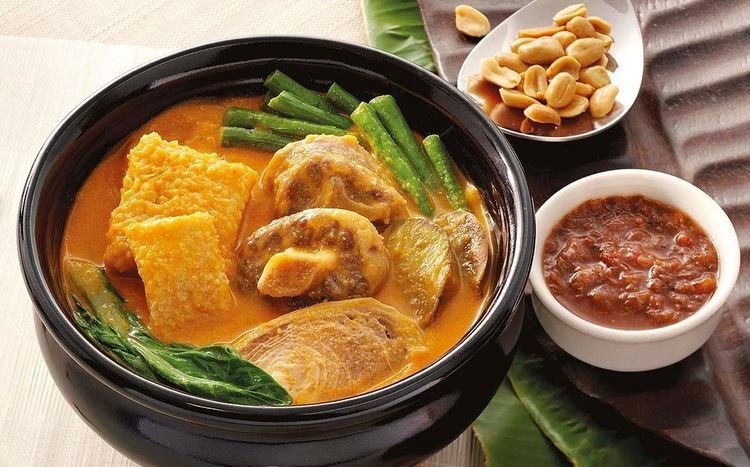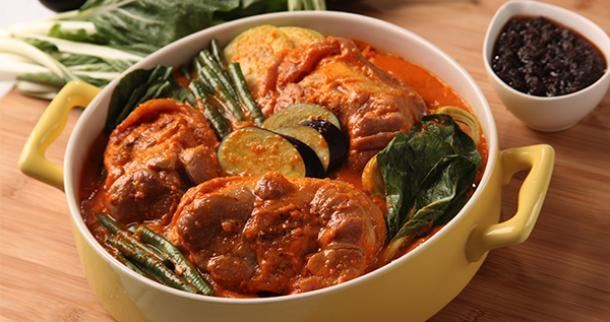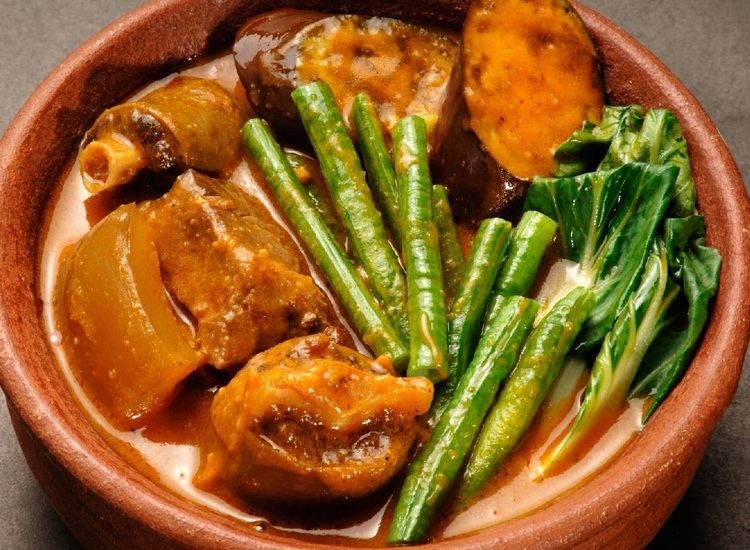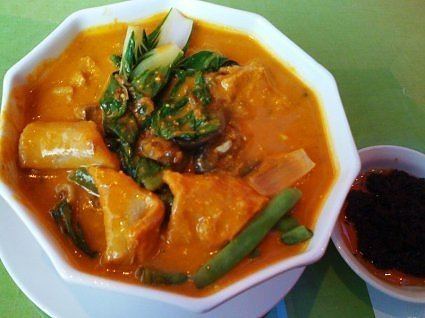Variations Goat meat kare-kare | Serving temperature Hot | |
Similar Sinigang, Sisig, Kaldereta, Bagoong, Pancit | ||
Pinoy recipe kare kare stew beef with vegetables
Kare-kare is a Philippine stew complimented with a thick savory peanut sauce. It is made from a base of stewed oxtail (sometimes this is the only meat used), pork hocks, calves feet, pig feet, beef stew meat, and occasionally offal or tripe. Kare Kare can also be made with seafood (prawns, squid, and mussels) or all vegetables. Vegetables, which include (but are not limited to) eggplant, Chinese cabbage, or other greens, daikon, green beans, and asparagus beans are added — usually equaling or exceeding the amount of meats. The stew is flavored with ground roasted peanuts or peanut butter, onions, and garlic. It is colored with annatto (extracted from annatto seeds in oil or water) and can be thickened with toasted or plain ground rice. Other flavorings may be added, but the dish is usually quite plain, compared to other Filipino dishes. Other seasonings are added at the table. Variants may include goat meat or (rarely) chicken. It is often eaten with bagoong (shrimp paste), sometimes spiced with chili, bagoong guisado (spiced and sautéed shrimp paste), and sprinkled with calamansi juice. Traditionally, any Filipino fiesta (particularly in Pampanga region) is not complete without kare-kare. In some Filipino-American versions of the dish, oxtail is exclusively used as the meat.
Contents

History

As with many things in the Philippines, there are several stories as to the origins of this unusual, distinctly Filipino dish. The first one is that it came from Pampanga. Another has it coming from the regal dishes of the Moro elite who once settled in Manila before the Spanish arrival (interestingly enough, in Sulu and Tawi-Tawi, kare-kare remains a popular dish). Another is from Sepoy conscripts from Southern India that settled in Philippines during the British Occupation of the Philippines. Homesick, they improvise their own cuisine with available materials. They call it kari-kaari, curry, and now, kare-kare.

Kare-kare is a well-known dish in Pampanga, which is often hailed as the Culinary Capital of the Philippines. Its name derived from the word “Kari” from the word “curry”. However, Kare-Kare has a far different from Indian curry. Kare-Kare has a similar flavor to satay because of the use of peanuts in the sauce.
It's a comfort food for Filipinos and a perennial family favorite in local and overseas Filipino households.
Preparation

Oxtail, with the skin on and cut into 2-inch lengths, and ox tripe are boiled until tender. Sometimes pieces of ox feet or shins are added. When the meat is tender, the soup becomes gelatinous. Ground roasted peanuts (or peanut butter), ground roasted glutinous rice is added to make the soup thicker. Atsuete (annatto) is added to give color. The basic vegetables for kare-kare include young banana flower bud or "heart" (puso ng saging), eggplant, string beans, and Chinese cabbage (pechay). Kare-kare is often served hot with special bagoong alamang (sauteed salted shrimp paste).


